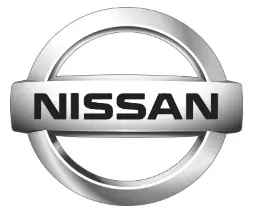Nissan Armada 2019
The Nissan Armada 2019 was introduced as the latest iteration of Nissan’s full-size SUV. It offers a combination of power, capability, and advanced features. Here are some key features and updates for the 2019 Armada:
- Design: The 2019 Armada showcases a bold and muscular exterior design with a prominent V-motion grille, LED headlights, and a strong body profile. It presents a commanding presence on the road.
- Interior: The Armada 2019 offers a spacious and comfortable cabin with seating for up to eight passengers. It features high-quality materials, premium finishes, and a range of available amenities such as leather upholstery, heated and ventilated seats, and a power-folding third-row seat.
- Performance: The 2019 Armada is powered by a 5.6-liter V8 engine, generating 390 horsepower and 394 lb-ft of torque. It is paired with a seven-speed automatic transmission, providing smooth acceleration and towing capabilities.
- Technology: The Armada 2019 comes equipped with a range of advanced technology features. It includes an 8-inch touchscreen infotainment system with navigation, Apple CarPlay and Android Auto integration, Bluetooth connectivity, and a Bose audio system. Additional available features include a rear-seat entertainment system and a surround-view camera.
- Safety: The 2019 Armada prioritizes safety with the inclusion of Nissan Safety Shield 360, a suite of advanced safety features. It includes Automatic Emergency Braking with Pedestrian Detection, Blind Spot Warning, Rear Cross Traffic Alert, Lane Departure Warning, and High Beam Assist.
- Off-Road Capability: The Armada 2019 offers available Intelligent 4×4 with a two-speed transfer case, allowing for enhanced off-road capability and confident driving in various conditions.
These are some of the key features and updates for the Nissan Armada 2019 model. For more detailed information and to explore the available trim levels and options, I recommend visiting Nissan’s official website or contacting a Nissan dealership.
VEHICLE INFORMATION DISPLAY
The vehicle information display is located between the speedometer and odometer and shows the indicators for the driving systems, Intelligent Key operation and various warnings and information.
For detailed information about each system, see the following sections:
- Automatic Transmission (AT)
- “Warning lights, indicator lights and audible reminders” (P.2-10).
- “Driving the vehicle” (P.5-17).
- Four-Wheel Drive (4WD)
- “NISSAN all-mode 4WD®” (P.5-116).
- Intelligent Back-up Intervention (I-BI)
- “Intelligent Back-up Intervention (IBI)” (P.5-53).
- Intelligent Cruise Control (ICC)
- “Intelligent Cruise Control (ICC)” (P.5-63).
- Intelligent Distance Control (I-DC)
- “Intelligent Distance Control (I-DC)” (P.5-85).
- Intelligent Key system
- “Intelligent Key system” (P.3-7).
- “Push-button ignition switch” (P.5- 13).
- Automatic Emergency Braking (AEB)
- “Automatic Emergency Braking (AEB)” (P.5-98).
- Intelligent Forward Collision Warning (I-FCW)
- “Intelligent Forward Collision Warning (I-FCW)” (P.5-106).
MAINTENANCE INDICATORS
- Engine oil replacement indicator
This indicator appears when the customer set a time comes for changing the engine oil. You can set or reset the distance for changing the engine oil.(See “Trip computer” (P.2-28).) - Oil filter replacement indicator
This indicator appears when the customer set a time comes for replacing the oil filter. You can set or reset the distance for replacing the oil filter. (See “Trip computer” (P.2-28).) - Tire replacement indicator
This indicator appears when the customer set distance comes for replacing tires. You can set or reset the distance for replacing tires. (See “Trip computer” (P.2-28).)
WARNING
The tire replacement indicator is not a substitute for regular tire checks, including tire pressure checks. See “Changing wheels and tires” (P.8-37). Many factors including tire inflation, alignment, driving habits, and road conditions affect tire wear and when tires should be replaced. Setting the tire replacement indicator for a certain driving distance does not mean your tires will last that long. Use the tire replacement indicator as a guide only and always perform regular tire checks. Failure to perform regular tire checks, including tire pressure checks, could result in tire failure. Serious vehicle damage could occur and may lead to a collision, which could result in serious personal injury or death.
“OTHER” indicator
This indicator appears when the customer set a time comes for replacing items other than the engine oil, oil filter and tires. You can set or reset the distance for replacing the items. (See “Trip computer” (P.2-28).)
More maintenance reminders are also available on the center display. (See NissanConnect® Owner’s Manual.)
Instruments and controls
consumption and speed? Elapsed time and trip odometer? Distance to empty (dte)? Outside air temperature (ICY) ?Setting? Warning check
- Current and average fuel consumption
The current and average fuel consumption mode shows the current and average fuel consumption. - Average fuel consumption (MPG or l (liter)/100 km) and speed (MPH or km/h)
Fuel consumption:
The average fuel consumption mode shows the average fuel consumption since the last reset. Resetting is done by pushing the switch for longer than 1 second. (The average speed is also reset at the same time.)
The display is updated every 30 seconds. At about the first 1/3 mile (500 m) after a reset, the display shows “——”.
Speed:
The average speed mode shows the average vehicle speed since the last reset. Resetting is done by pushing the switch for longer than 1 second. (The average fuel consumption is also reset at the same time.)
The display is updated every 30 seconds. The first 30 seconds after a reset, the display shows “——”. - Elapsed time and trip odometer (MILES or km)
Elapsed time:
The elapsed time mode shows the time since the last reset. The displayed time can be reset by pushing the switch for longer than 1 second. (The trip odometer is also reset at the same time.)
Trip odometer:
The trip odometer mode shows the total distance the vehicle has been driven since the last reset. Resetting is done by pushing the switch for longer than 1 second. (The elapsed time is also reset at the same time.) - Distance to empty (dte — MILES or km)
The distance to empty (dte) mode provides you with an estimation of the distance that can be driven before refueling. The dte is constantly being calculated, based on the amount of fuel in the fuel tank and the actual fuel consumption.
The display is updated every 30 seconds.
The dte mode includes a low-range - warning feature. If the fuel level is low, the warning is displayed on the screen.
When the fuel level drops even lower, the dte display will change to “——”.- If the amount of fuel added is small, the display just before the ignition switch is pushed to the OFF position may continue to be displayed.
- When driving uphill or rounding curves, the fuel in the tank shifts, which may momentarily change the display.
- Outside air temperature (ICY — °F or °C)
The outside air temperature is displayed in °F or °C in the range of −22 to 131°F (−30 to 55°C).
The outside air temperature mode includes a low-temperature warning feature. If the outside air temperature is below 37°F (3°C), the warning is displayed on the screen.
The outside temperature sensor is located in front of the radiator. The sensor may be affected by road or engine heat, wind directions and other driving conditions. The display may differ from the actual outside temperature or the temperature displayed on various signs or billboards. - Setting
Setting is available while the engine is running.
Setting cannot be made while driving. The message “SETTING CAN ONLY BE OPERATED WHEN STOPPED” is also displayed on the vehicle information display.
The switch and switch are used in the setting mode to select and decide a menu.
SKIP:
Push the switch to move to the warning check mode.
Push the switch to select other menus.
ALERT:
There are 3 submenus under the alert menu.- BACK
Select this submenu to return to the top page of the setting mode. - TIMER
Select this submenu to specify when the “TIMER” indicator activates. - ICY
Select this submenu to display the low outside temperature warning.
- BACK
MAINTENANCE:
There are 5 submenus under the maintenance menu.
- BACK
Select this submenu to return to the top page of the setting mode. - TIRE
Select this submenu to set or reset the distance for replacing tires. - FILTER
Select this submenu to set or reset the distance for replacing the oil filter. - OIL
- Select this submenu to set or reset the distance for changing the engine oil.
- OTHER
Select this submenu and set or reset the distance for replacing items other than the engine oil, oil filter, and tires.
OPTIONS:
There are 4 submenus under the display menu.
- BACK
Select this submenu to return to the top page of the setting mode. - LANGUAGE
Select this submenu to choose English, French or Spanish for display. - UNIT
Select this submenu to choose the unit. - EFFECTS
Select this submenu to turn on and off the needle sweep function when starting the engine.
SECURITY SYSTEMS
Your vehicle has two types of security systems, as follows:
- Vehicle security system
- NISSAN Vehicle Immobilizer System The security condition will be shown by the security indicator light.
VEHICLE SECURITY SYSTEM
The vehicle security system provides visual and audio alarm signals if someone opens the doors, hood, or liftgate when the system is armed. It is not, however, a motion detection type system that activates when a vehicle is moved or when a vibration occurs.
The system helps deter vehicle theft but cannot prevent it, nor can it prevent the theft of interior or exterior vehicle components in all situations. Always secure your vehicle even if parking for a brief period. Never leave your Intelligent Key(s) in the vehicle, and always lock it when unattended. Be aware of your surroundings, and park in secure, well-lit areas whenever possible.
Many devices offering additional protection, such as component locks, identification markers, and tracking systems, are available at auto supply stores and specialty shops. Your NISSAN dealer may also offer such equipment. Check with your insurance company to see if you may be eligible for discounts for various theft protection features.
Reference Link
Download Manuals: https://www.nissanusa.com/owners/ownership/manuals-guides.html


